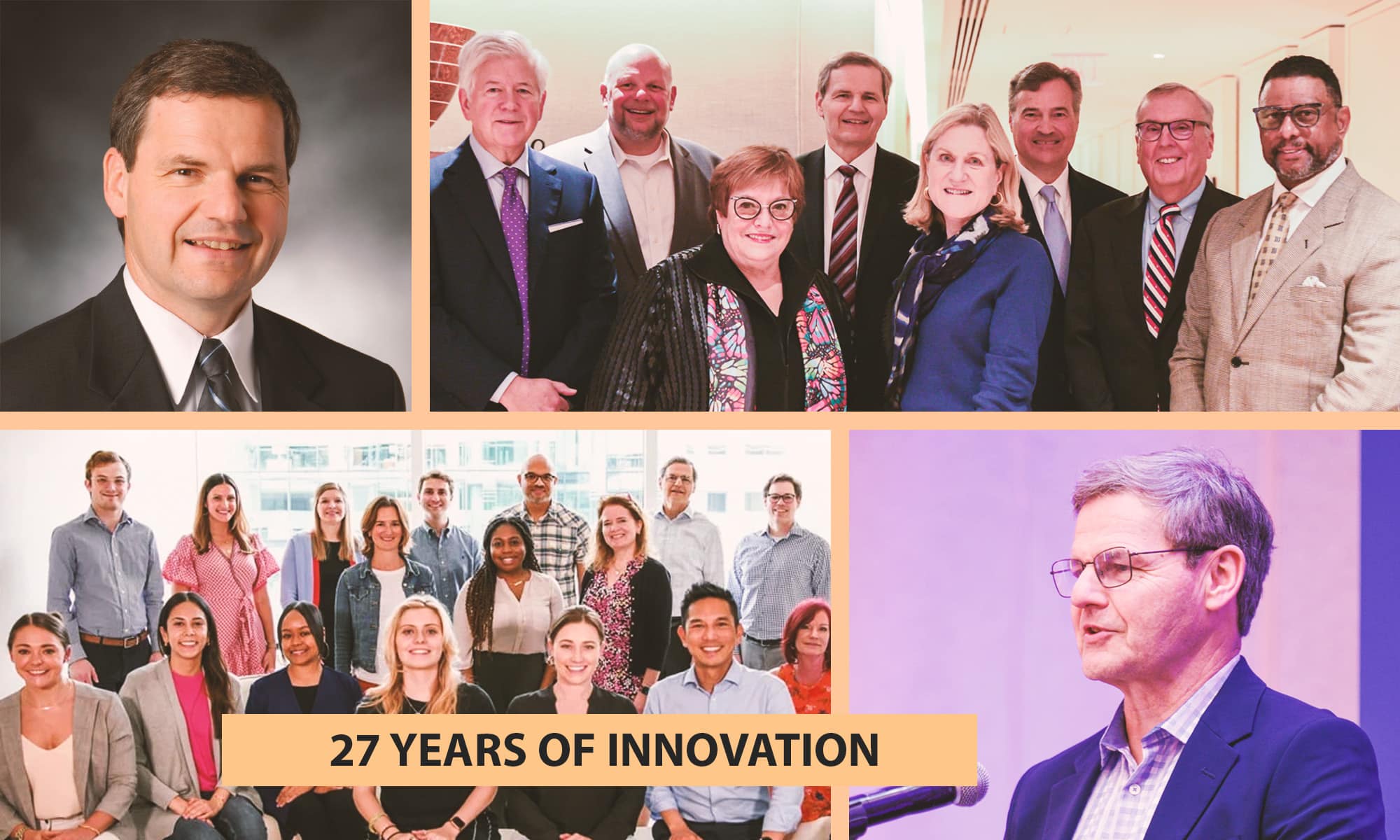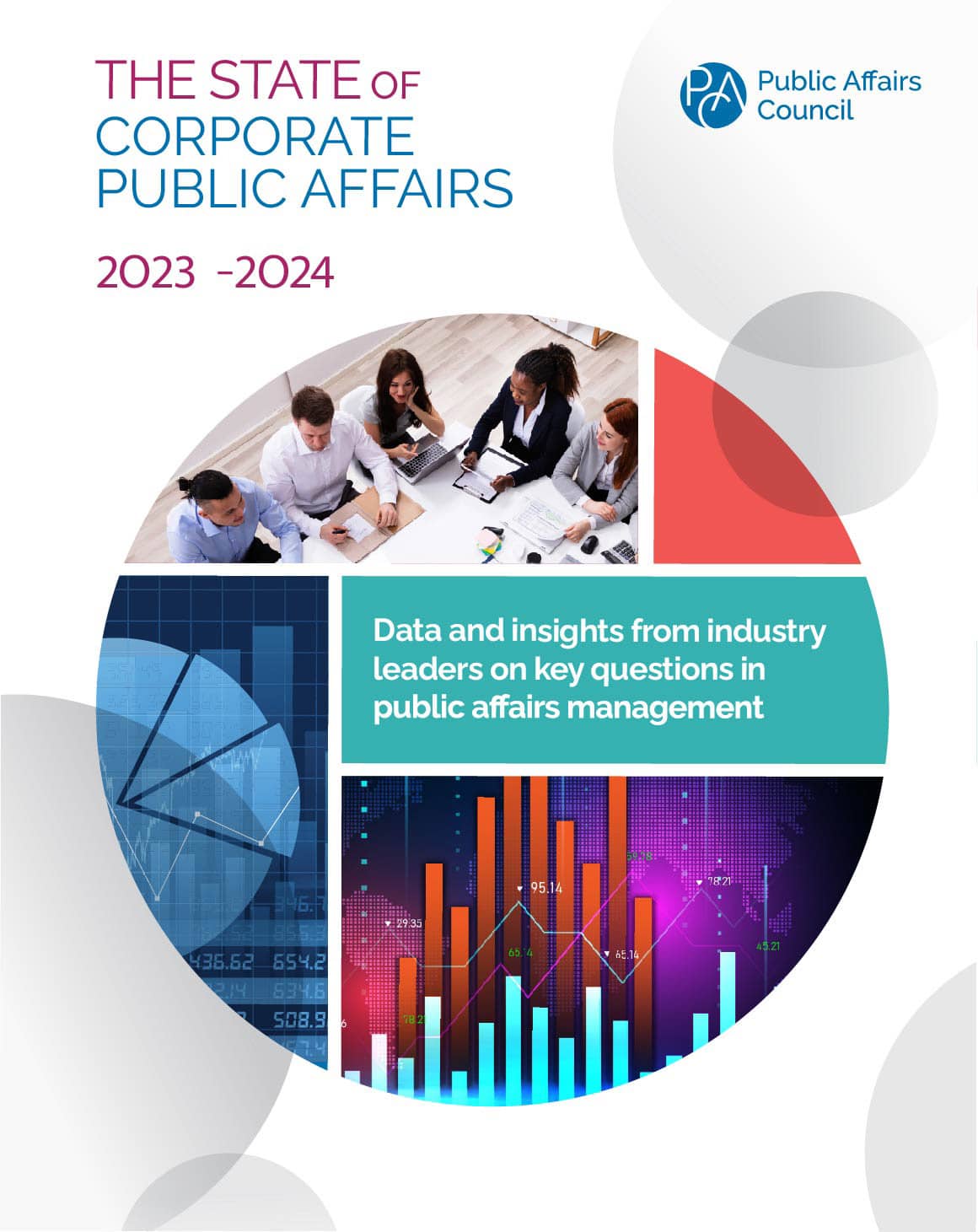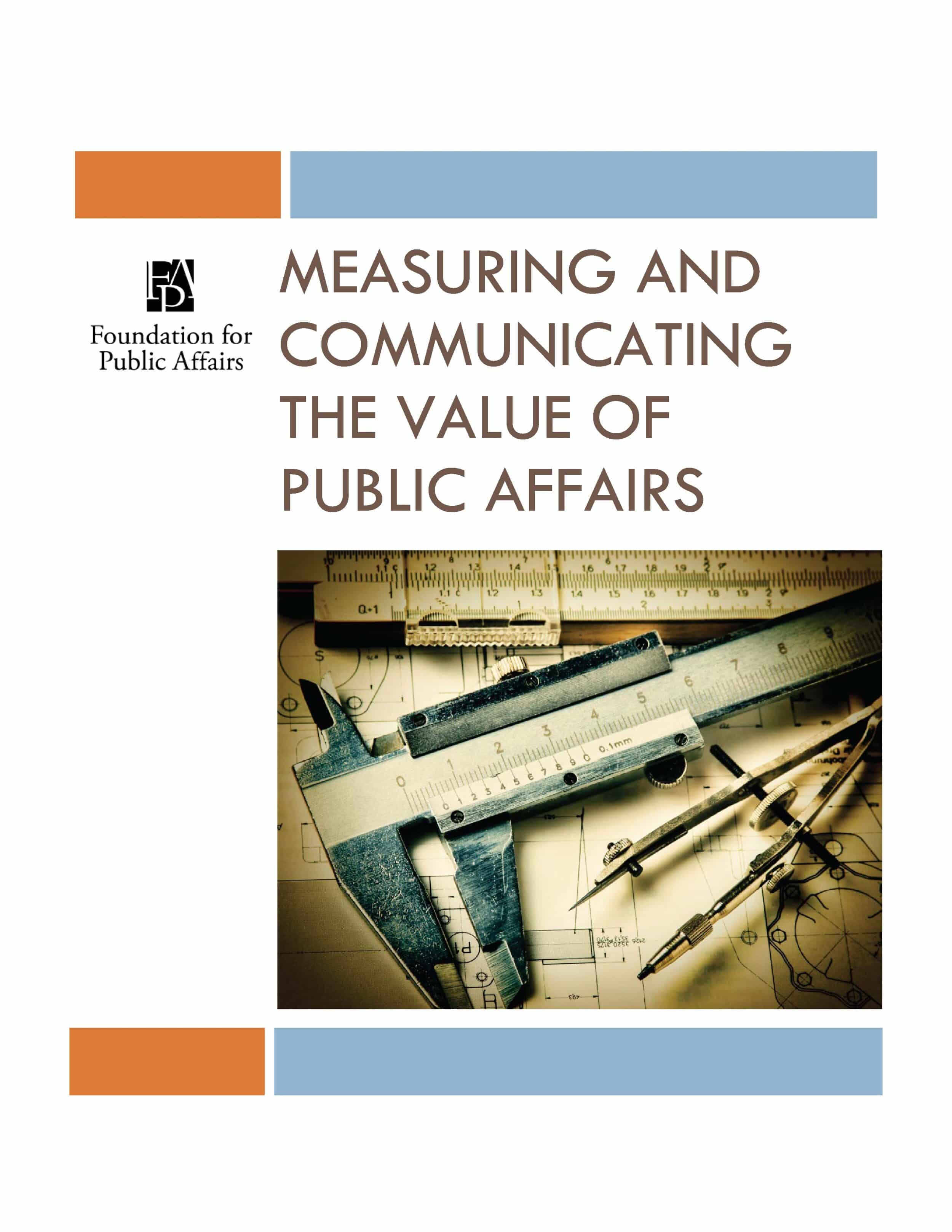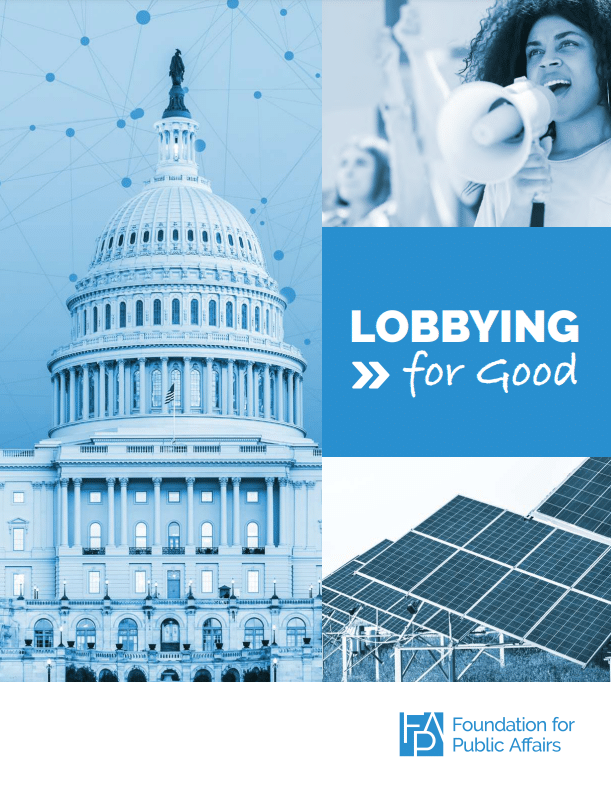Conversations with Doug Pinkham: Becoming a Thought Leader
May 2024
It’s the morning of July 31, 2012, and on Washington Journal, the respected C-SPAN broadcast, the guest is Doug Pinkham. This isn’t Pinkham’s first appearance, but it is the first in which he alone is being interviewed.
The president of the Public Affairs Council since 1997, Pinkham is talking about the findings of the Council’s Public Affairs Pulse survey. He explains, with patience and clarity, that at a time when major corporations were routinely portrayed with ill-concealed scorn in the media and in popular culture generally, the survey found that in fact 67% of Americans have at least a “somewhat favorable view of big business.”
This was a significant improvement over the previous year, when the first Pulse Survey was conducted. Back then, 61% expressed a favorable opinion. In both years, as might be expected, Americans said corporations had too much power and their involvement in politics, through the use of lobbyists, was viewed with suspicion and distrust.

But when asked about lobbying “to protect jobs, reduce costs and open new markets,” Pinkham said, Americans’ approval rose. This was newsworthy, not least because almost no independent, nonpartisan, nonpolitical research into Americans’ attitudes toward business had ever been conducted, and a notable takeaway followed: “Companies need to do a better job of explaining why they’re involved in politics,” Pinkham said. When they are “more upfront” about their political involvement, he said, the public will understand and favorability will improve.
More annual Pulse surveys followed, and, at Pinkham’s direction, further newsworthy studies have been conducted by the Council and the Foundation for Public Affairs, generating significant media attention. The reports have been cited by — and Pinkham and Council staff quoted in — The New York Times, The Washington Post, The Wall Street Journal, National Public Radio, Fox Business, Axios, Politico and Bloomberg Television, among others.
Strengthening the Council’s Reputation
Even so, the C-SPAN appearance “helped legitimize the Council,” Pinkham recalls. “It was the seriousness of our research that resulted in that appearance, and it is the seriousness of our research that has continued to strengthen the Council’s reputation ever since.” The Pulse survey continues to generate much of the Council’s media attention, but other research has also broken new ground, setting a new standard of excellence for the Council and its work.
When Pinkham took over in 1997, the Council functioned effectively to provide professional training for its member companies and associations. “We were doing that very well, but we knew we could do more,” says the Cleveland native and honors graduate of the College of Wooster in Ohio. At the time, the Council was doing little in the way of research. Since the early 1990s, it had conducted salary surveys and a benchmarking survey of corporate public affairs every three years, but there were few studies that surveyed the opinions of Council members, much less those of the general public.
“No independent organization was doing substantive research into Americans’ attitudes toward business, and the time had come to change that for the benefit of our members, certainly, but also for the benefit of the media and the public,” Pinkham recalls. “The world in which business and politics was conducted was changing, and there was a need for research that would shed light on these changes — research that was not so much tactical but strategic. This represented a significant opportunity for the Council, and we decided to meet that challenge.”
Professionalizing Public Affairs
The data that such research would produce, among other benefits, could help “professionalize the work of public affairs,” as Pinkham puts it. “There was also a need at this time for the public affairs profession to seize the opportunities that these changes presented. It was time for the work of government affairs professionals to come out of the shadows, not just to look good but to position the highly capable people doing this work to contribute more substantially to the organizations that employed them. They could become a stronger force for the development of business strategy and do a better job of connecting with allies, supporters and other stakeholders.”
For decades, government affairs was seen as largely transactional — to get this bill killed, for example, or that resolution tabled. That was an important function but also limiting. Public affairs could operate on a higher level, to help business organizations manage risk, for example. Risk management could not be the sole responsibility of finance or operations; public affairs and communications executives needed to have a seat at the table. The time had come to reframe the profession for the role it could play in a rapidly changing business environment.
‘Digital Democracy’
Research that could make this transition possible began. In 1999, just two years after Pinkham took office, the Foundation issued its groundbreaking study Creating a Digital Democracy: The Impact of the Internet on Public Policy Making. This report, released when the business world’s focus was limited largely to e-commerce, scooped major media outlets with its prescient analysis of the birth of digital advocacy. Public attention until then had been fixated on the effect of the internet on the buying and selling of products and services, “and almost no one was talking about what we called ‘idea-commerce,’” Pinkham says. “Nobody in major media seemed to be aware of, much less pondering, how the internet could be a great tool for organizing people.”
Creating a Digital Democracy relied on some 30 interviews in which professionals from business, government, politics, nonprofits and academia explored the ways in which small activist groups with minuscule budgets could challenge much larger organizations, including big corporations, through the spread of information (and misinformation) and ideas. Creating a Digital Democracy seems prophetic today, as so many of the conclusions it reached were confirmed in the years to come. Ideas spread in new ways, from diverse sources, leading to a deepening distrust of legacy media and big companies, with people trusting friends and family more than large organizations.
In the years that followed, the Council began to solidify its reputation in Washington and now globally, through its Brussels office, as something of a mini-think tank producing research that is nonpartisan and nonpolitical — a rare commodity in both capitals. The Council had begun to exercise genuine “thought leadership” at a time when that concept, which has since become a buzzword, still meant something.
True Thought Leadership
Coined by Joel Kurtzman, editor of the Harvard Business Review and strategy+business magazine, the term “thought leadership” had been around for only three years when the Council began to produce research worthy of the name. Thought leaders, Kurtzman wrote, were those who “possess a distinctively original idea, a unique point of view, or an unprecedented insight into their industry.” They are recognized by their peers for understanding “the business they are in, the needs of their customers and the broader marketplace in which they operate.”
Pinkham’s tenure also began at a time when businesses were facing new challenges that involved new risks. Anti-corporate sentiment was rising, in part a result of the effectiveness of upstart activist groups using the internet so effectively. Globalization was changing the business environment, raising new public policy questions that had to be addressed. Companies also found themselves embroiled in political and social controversies — or facing criticism if they tried to avoid them.
They were also under increasing pressure to be more transparent, which was long overdue. Then came the Sept. 11 terrorist attacks, the 2008 financial crisis, the COVID-19 pandemic and the Jan. 6 insurrection at the U.S. Capitol, all of which presented unprecedented challenges for businesses, for how they would respond and for how these developments would affect their work.
‘Controversy Management’
By the early 2000s, companies had their hands full dealing with matters of “crisis management,” responding as responsibly as possible, for example, to an environmental disaster or a business scandal. What too few had anticipated was the need to develop some proficiency at what Pinkham calls “controversy management.” Here, too, the Council’s research proved helpful. In 2016, for example, with North Carolina’s so-called bathroom bill making headlines, companies came under pressure to take a position on transgender rights, which in years past would not have been necessary.
For decades, businesses thought they could avoid controversies that, as their executives and shareholders saw it, had nothing to do with the bottom line. This period had come and gone — it was believed — as companies came to understand the pressure tactics of activist groups. The Council’s research, however, proved this was not the case. In its 2016 study Taking a Stand: How Corporations Engage on Social Issues, the Council proved that “the pressure was coming overwhelmingly from a company’s own employees and its senior leadership,” Pinkham says.
Corporate involvement, according to the study, “is not primarily led by the encouragement of politicians, activists or the news media.” The two most influential groups of stakeholders were senior management (78%) and regular employees (70%). When the study was conducted again in 2021, regular employees jumped considerably to 83% and senior management held steady at 79%.
In the Lobbying for Good study, published in 2021 by the Foundation for Public Affairs, these issues were examined in more detail through interviews and case studies with executives at major companies about how they initiate change that benefits society, key stakeholders and their core businesses.
Pressure From Within
Controversy management meant that companies would need to address these pressures from within their own organizations — and that failure to do so, at the very least, could hurt their ability to attract and retain talent. Here, too, public affairs professionals could and should take a leading role. As they do so, of course, they become strategic advisers to the C-suites of their companies.
It was a small but significant step from controversy management to political risk analysis and management, which will likely be the profession’s main focus for the foreseeable future. “Political risk wasn’t even an idea until very recent years,” Pinkham says. “There are financial risks and operations risks, which are routinely taught in business schools, but there aren’t comparable classes in political risk. Until we began to study this subject and produce our own research, there was almost no practical information available.”
The Council’s research pointed the way toward an expanded role for the profession and continues to do so. Year after year, new studies have been conducted and released, and the Council’s importance in the world of politics and policy has grown. “Thanks to our excellent staff as well as the contributions of our board and other members, we’ve achieved a great deal over the past three decades,” Pinkham says. “The Council is well positioned for the challenges the business world faces, and we can look forward to more thought-leadership opportunities in the future.”
Look for upcoming features on innovations in expertise and executive education in this special series.
25 Years of Groundbreaking Research
From Creating a Digital Democracy in 1999 to the soon to be released study on political involvement strategies, for the past 25 years, under the guidance of President Doug Pinkham, the Public Affairs Council and the Foundation for Public Affairs have been producing studies and reports that amplify the important work of government affairs in a rapidly changing business environment. Topics examined include digital advocacy, risk management, crisis communications, global public affairs, and corporate involvement in social issues, to name just a few.
Here is a short list from over 50 Council and Foundation publications in the past 25 years.

State of Corporate Public Affairs (published every three years since 1992)

Creating a Digital Democracy: The Impact of the Internet on Public Policy Making (1999)

PAC Benchmarking Reports (published every two years since 2001)

When Disaster Strikes: A New Guide to Crisis Management (2008)

Managing Risk: Public Affairs Enterprise Risk Management (2010)

Public Affairs Pulse Survey [Annual public opinion poll since 2011]

Measuring and Communicating the Value of Public Affairs (2014 and 2023)

Taking it to the Top: Engaging Corporate Leadership in Public Policy (2017)

Opening Doors in Brussels (2018)

The Pandemic’s Impact on Government Affairs (2020 & 2021)

Lobbying for Good (2021)
Visit pac.org/research for more information.
More News & Resources
Whether you’re building cutting-edge campaigns, engaging communities on social, mobilizing advocates, or exploring the power of new AI tools, THIS is where the future of advocacy comes alive.


